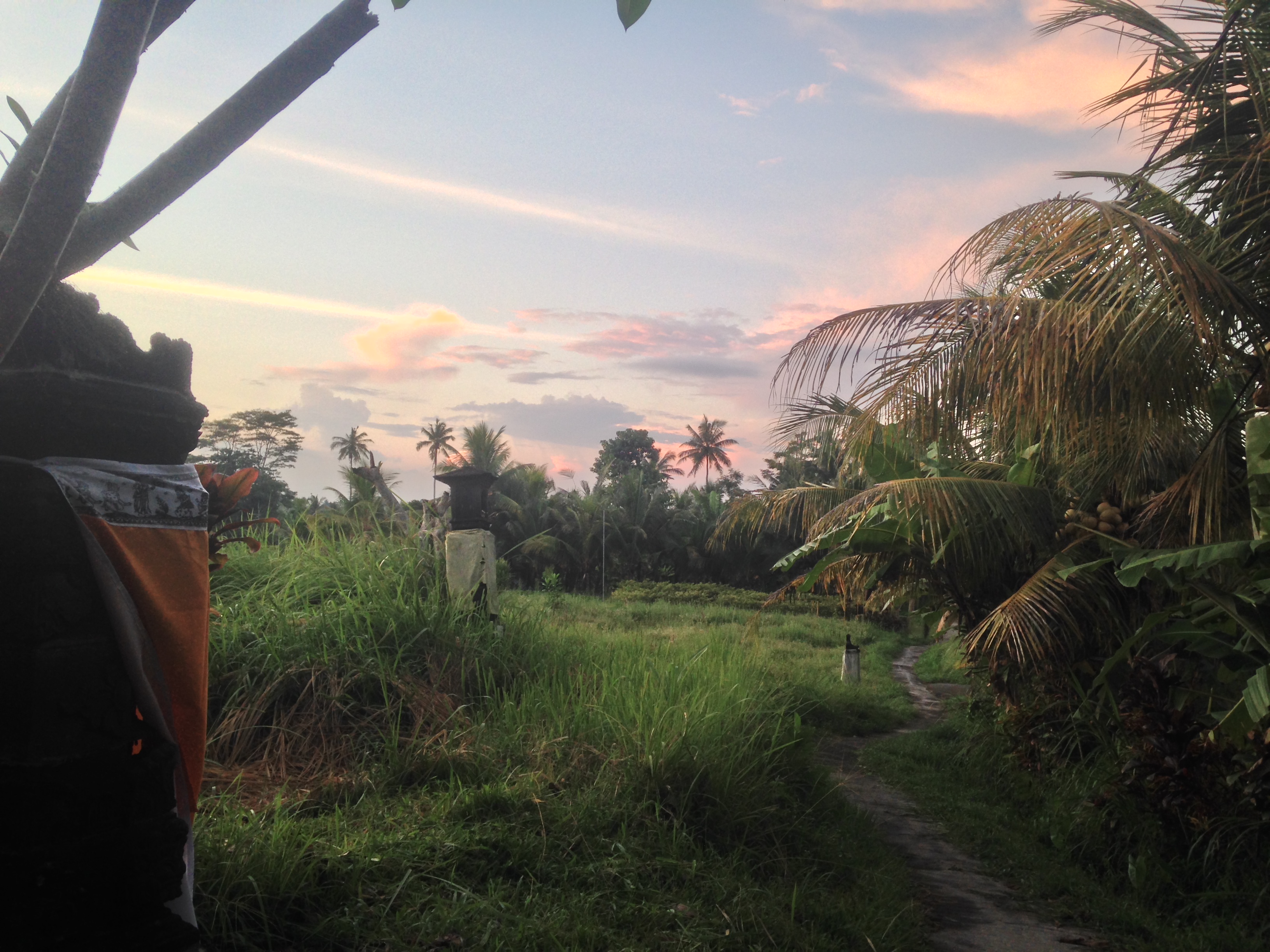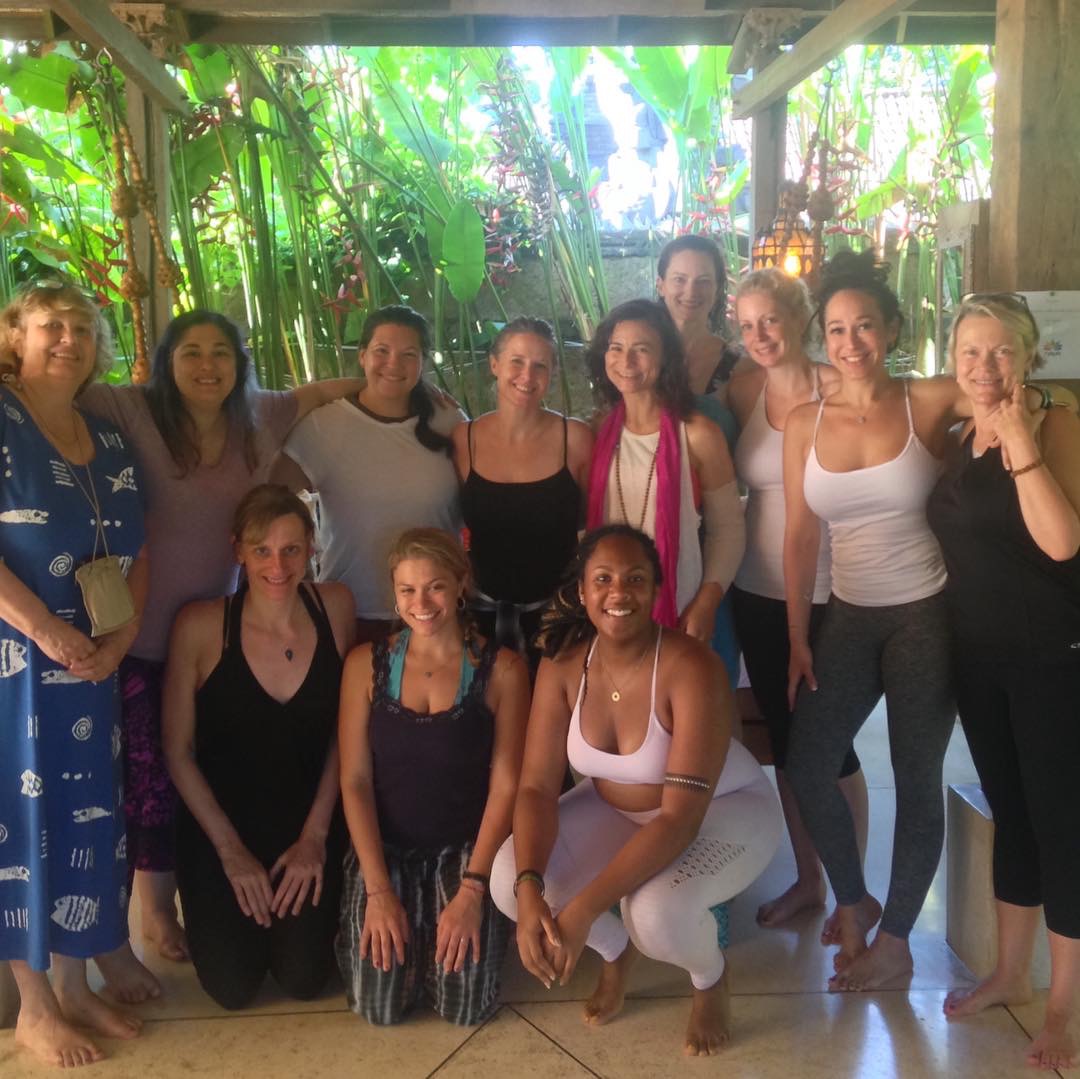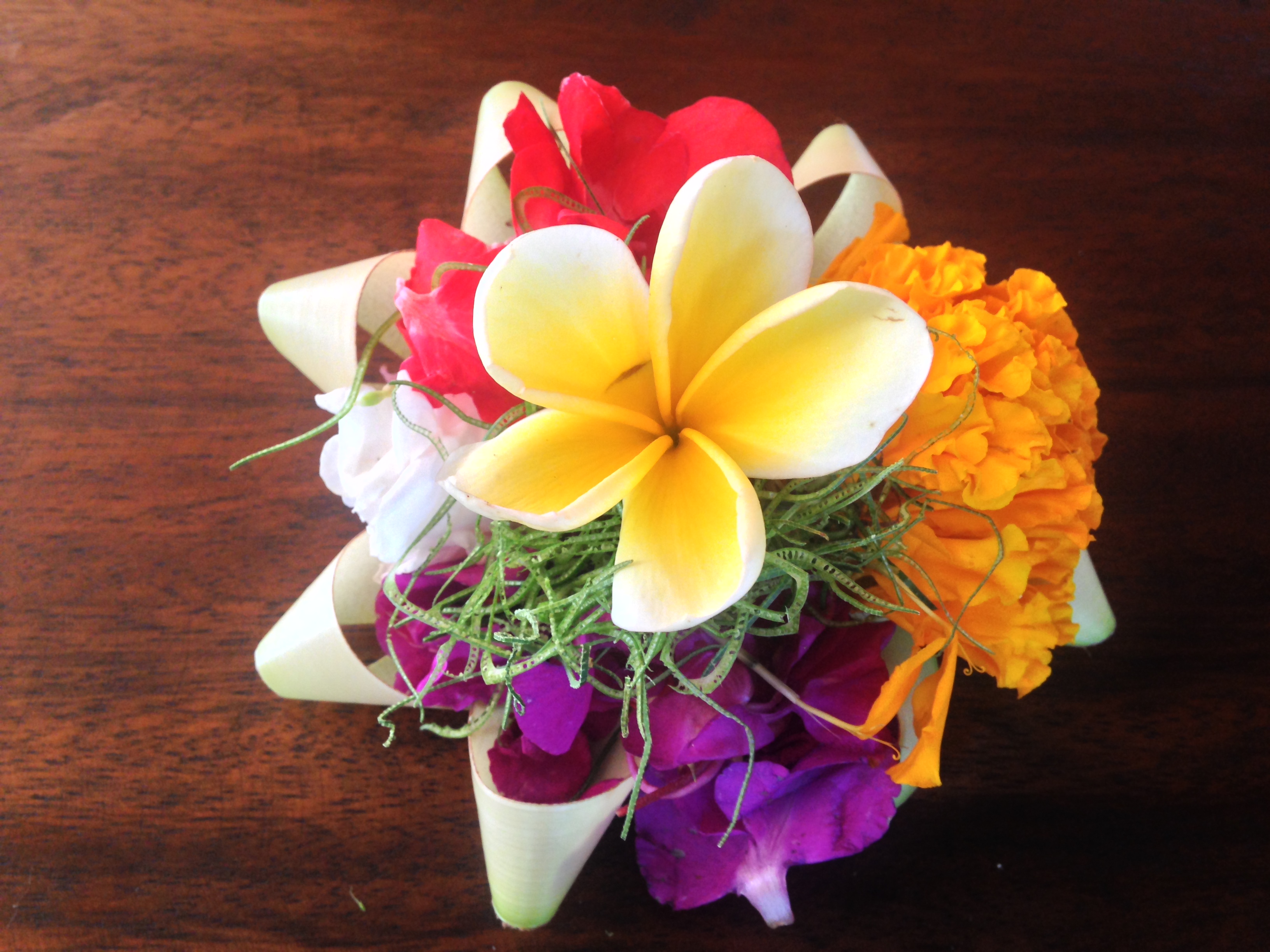Before I embarked on the 21-hour flying journey from New York that landed me in the tropical paradise of Bali, I was nervous. I didn’t know any of the women going on the retreat and wondered how I’d fit in. I wondered too if I was up to the physical demands of the yoga sessions and emotional demands of the chakra and goddess workshops. “You’ll probably have to touch a womb,” my roommate who’s infinitely more well versed in goddess culture told me.

When I arrived, I learned I was focusing on the wrong things. This trip was not about touching a womb (although I did at one point touch my own), doing 100 hours of yoga, or meeting any other perceived marks of achievement. This trip, and others like it are about getting back in touch with the strengths that lie within, the strengths that others see in us instantly, but for whatever reason, we are blind to seeing in ourselves. The retreat was an opportunity to allow the confidence, power, and joy we women come into the world with reemerge, to tap into that powerful strength we have as bringers of beings into the world, and do so in the supportive cradle of a new-found sisterhood. The following will help any woman guarantee her inner goddess never goes dormant again.
1.There is no one-size-fits all goddess trip. In researching trips, start small by looking at what’s on offer at a yoga studio near you. While on the trip, I was fortunate to study with: Nadine McNeil (The Universal Empress) and Natashia Iocavelli. They are both in Bali and run various workshops and retreats. McNeil teaches at the world-famous Yoga Barn, which offers a personalized 7-day yoga retreat. Make sure whatever trip you choose is flexible, aligns with your interests, and allows ample free time to explore the local area. Finally, double check what’s included and excluded in the price—extra fees can quickly add up!
2.Be open to the YOU who shows up. Want to lay in savasana (corpse pose) in some, or all yoga sessions in the shala (a thatched roof pavilion where yoga classes are typically held)? Do it. Need a break from the all-vegetarian fare at the retreat center to snack on some extra crispy roasted pig (babi guling) skin at Anthony Bourdain’s go-to suckling pig hang in Bali? Do it. Want to cry for one day straight—into your breakfast of sweet green pandan pancakes made from the local tropical plant and into dinnertime? Do it. Remember: Listen to YOUR body, YOUR gut, YOUR intuition. Honor it as you wish, and while you do, you’ll be supported by a group of women, each of whom are on their own particular journeys.
3.Should haves. Bali is buggy, humid, and hot, like fire-burning-from-the-inside hot. To combat the elements, bring: a hand fan, DEET bug spray (pour into a squeezable clear travel bottle and splash all over the body like aftershave), antibacterial hand sanitizer, and a small first aid kit that includes Neosporin, afterbite, and Dramamine. You won’t want to be without several hair ties, a foldable raincoat (in my case, my Cole Haan—bought in Costco), a hat (military caps pack best), cash (crisp, new $100 bills for exchanging, which is easy to do in the expat epicenter of Ubud and other major cities) and an ATM card. Credit cards aren’t widely accepted. For my week-long trip, I spent around $300 on clothing, accessories, gifts, excursions, and some meals.
4.To sarong or not to sarong. To sarong! While it’s important when visiting temples in Bali to cover your upper body and legs, just as important is what you use to cover up. Mostly, you’ll be required to cover your legs and lower body with a sarong (I brought two for my week-long trip). Carry one with you at all times, although there are sarongs available for rent or purchase near some temples. Long-sleeved, flowy hippy-type tops combined well with sarongs and offered ample torso coverage, as did my cotton green salwar kameez (Indian tunic). When visiting a water temple, where visitors make offerings to altars and dunk themselves in the sacred waterfalls and streams known for their curative powers, in addition to the sarong, have a change of clothes. For footwear: Have a good pair of sneakers and sturdy sandals to best negotiate slippery rocks on hikes and equally slippery sidewalk tiles in the city. Also, know that nothing will air dry in Bali. No matter how hard you try. So be mindful of the types of fabrics you pack.
5.When haggling, always go in at half. Bargaining is an integral part of any shopping experience in Bali, but there is an etiquette for it. Stalls are usually haggling zones, while shops with doors may or may not welcome a haggler. At a stall, after asking the price of an item you like, counteroffer with half that amount. Then, go from there, back and forth, until you and the seller agree to a price you feel comfortable with. To help navigate the unfamiliar pricing territory, use a currency exchange app. Expect to pay 70,000 Indonesian rupiah for yoga (elephant) pants; 10,000 for tri-colored yarn protection bracelets sold at temples; 100,000-150,000 for well-made fabric dresses and 80,000-100,000 for jumpers. Hanoman road in Ubud is peppered with stalls and stores to suit all your goddess shopping needs. There you can pick up goddess gear, Balinese incense (a combination of sandalwood and frangipani, the nation’s signature flower), wood carvings, and all-natural beauty products, like those from Balinese brand Nadis Herbal, found at the Lemongrass Shop.
6.Do your due diligence. While everything on the trip may be planned for you, it can only help to do your own research on where you’ll be, what you’ll be doing, what’s expected of you, and what you should expect from others. Be clear on the level of difficulty for that pre-dawn hike up active volcano Mount Batur before you are on all fours, in the pitch black, clinging to the loose rocks in your path only lit by a tiny flashlight. Avoid unnecessary confusion, frustrations, or confrontations, especially if you do not speak the local language, by knowing your stuff ahead of time.
7.Waste not, or at least waste little. On your way to Bali and especially once you’ve set foot in Asia, you’ll see a mixture of Western toilets (where you sit) and non-Western toilets (where you squat). To use, squat facing the flushing handle. Throw paper in the waste basket nearby. Refrain from bringing and using pipe-clogging flushable wipes. Ask ahead if toiletries will be provided at the retreat center. If you must bring your own, opt to carry them in Nalgene bottles, instead of single-use containers. Bring a water bottle like those from S’well or Mira to fill up for daily use. And, if you don’t have a large canvas or reusable bag, why not put a day’s purchases in that new, beautiful Balinese bag you just bought?
8.Taking it all back. One of the most beautiful things we did on the Awaken the Goddess retreat at Naya Ubud was writing a short note of appreciation to each person before we left the resort. We wrote what each person inspired in us, what attributes we were most grateful for, affirmations, memories that illustrated just what was so striking about that individual. The notes were placed in sealed envelopes, which would be opened and read during the long airplane journeys home. That envelope and the invaluable love notes within it now occupy a small spiritual nook I’ve created on my nightstand back home. I open it up and read them whenever I need to see myself more clearly.
9.Home rituals. My trip organizer and yoga instructor Angela Rauscher refers to self-care as Feeding the Goddess, an act of self-nurturing and expression of gratitude for our bodies and life that should come at the start of each day. We must first tend to our own mental, emotional, and physical well-being before giving of ourselves to the world. To begin forming the habit, for two months set aside five minutes in the morning to check in with yourself. How is the goddess today? Is she sluggish, stressed, frustrated? Then, do something that brings her (you) joy and addresses whatever lacking feeling may be present. This may mean listening to a yoga instructor’s playlist, yogic chanting (kirtan), lighting a great smelling candle or incense, reading a poem (something by Rumi), writing, putting on the color red if your muladhara chakra (the body’s root energy center representing support, security, and stability) needs some oomph, going for a sunrise walk, getting on the yoga mat and doing hip openers to unclog the sacral chakra (your creativity center), or dancing around the room to Beyoncé’s “Single Ladies.” Whatever brings joy and comfort and awakens the senses, devote the time to it. End the day the same way you began it: from a place of gratitude and celebration. Give thanks for three things that happened. Take it a step further and write a love letter to yourself. What of your attributes and accomplishments are you grateful for? Seal it in an envelope. Open it up in six months’ time.

Since I returned from my retreat, I have also made a full moon fire ceremony a monthly ritual. For the ceremony, I make three lists. One list of the things I want to let go from my life, another of the things I want to let in, and the last of things I want to celebrate. Wearing all white, I take each list one by one and burn them on the night of a full moon.
Looking back, I’m reminded of that drive from the Denpasar airport through the expansive rice fields to the resort. Weary from more than 20 hours of traveling, I watched, mesmerized as women delivered painstakingly assembled canang sari of flowers, food, herbs, incense, and money to the Hindu altars at their homes and places of business. It wasn’t until later that I learned they were daily offerings of thanks to the gods always assembled only by women. When there wasn’t an altar, the vibrantly colored boats of appreciation were placed in doorways.

Happy gods equal a happy life goes the saying in Bali. Back in New York, I now know that a happy goddess equals a happy life. So, each day, much like those strong, solemn, spiritual women of Bali, I begin my day with a thank you, an offering of love and appreciation for my body and life evoking the same intention, gratitude, grace, and beauty I saw in them. While I’m back in the same home I left for my Balinese yoga retreat, I am experiencing that home, and my life, in a whole new way, starting each day from a place of gratitude.
Full disclosure: I’m not being paid to endorse any brands, products, people, or services mentioned in this story. They’re so good, I just couldn’t keep that info to myself!

Must-sees near Ubud:
- Bias Tugel Beach (white sand beach in Manggis, pictured above)
- Gunung Kawi Sebatu Temple (water temple)
- Mount Batur
- Tegallalang Rice Terraces
Currency exchange approximations:
- 100,000 Indonesian rupiah =$7
- 150,000=$11
- 500,000=$35
- 1mil=$71
- 2.8mil=$200


